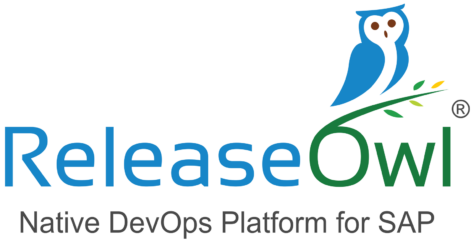Technology
Filter By
Browse By
- SAP Analytics and AI
- SAP Application Development and Integration
- All SAP Application Development and Integration
- SAP ABAP
- SAP ABAP Development Tools
- SAP ABAP Test Cockpit
- SAP API Management
- SAP BAPI
- SAP Basis
- SAP BRF
- SAP Business Application Studio
- SAP CMS
- SAP Design Studio
- SAP Development Tools
- SAP DevOps
- SAP EAI
- SAP EDI
- SAP Extension Suite
- SAP Fiori
- SAP Fiori Elements
- SAP Integration Suite
- SAP Low Code Application Development
- SAP Low Code Automation
- SAP Netweaver
- SAP Release Management
- SAP UI5
- SAP Web Application Server
- SAP Web IDE
- SAP Business Process Management
- SAP Center of Excellence
- SAP CIO
- SAP Customer Experience
- SAP Data and Data Management
- All SAP Data and Data Management
- SAP BW
- SAP BW/4HANA
- SAP Crystal Reports
- SAP Data Archiving
- SAP Data Center
- SAP Data Governance
- SAP Data Integration
- SAP Data Migration
- SAP Data Quality
- SAP Data Services
- SAP Data Strategy
- SAP Data Visualization
- SAP Data Warehouse Cloud
- SAP DMS
- SAP Document Control
- SAP EIM
- SAP ETL
- SAP ETL Tools
- SAP HANA
- SAP HANA Administration
- SAP HANA Deployment Infrastructure
- SAP HANA Studio
- SAP Master Data
- SAP Master Data Governance
- SAP MDM
- SAP Enterprise Architect
- SAP Enterprise Asset Management
- SAP ERP
- SAP Finance
- All SAP Finance
- SAP Accounting
- SAP AR AP
- SAP Asset Accounting
- SAP Billing Systems
- SAP BPC
- SAP BRIM
- SAP Cash Management
- SAP Central Finance
- SAP Controlling
- SAP COPA
- SAP Cost Center Accounting
- SAP Currency Risk
- SAP e-invoicing
- SAP FICO
- SAP Finance Automation
- SAP Advanced Financial Closing
- SAP Financial Consolidation
- SAP Financial Planning
- SAP FX Risk
- SAP General Ledger
- SAP Global Tax Management
- SAP Hyperion
- SAP Order to Cash
- SAP Payment Processing
- SAP Profitability Analysis
- SAP Rebate Management
- SAP S/4HANA Finance
- SAP SWIFT Compliance
- SAP Treasury Management
- SAP Universal Journal
- SAP Governance Risk and Compliance
- SAP Human Capital Management
- SAP Intelligent Technologies
- SAP Platform and Technology
- All SAP Platform and Technology
- SAP Business Technology Platform
- SAP Cloud
- SAP Cloud Connector
- SAP Cloud Integration Platform
- SAP Cloud Migration
- SAP Cloud Platform
- SAP Cloud Providers
- SAP Cloud Strategy
- SAP Digital Signature
- SAP Container Platform
- SAP HANA Enterprise Cloud
- SAP Digital Asset Management
- SAP Smart Forms
- SAP HEC
- SAP Digital Integration Hub
- SAP Hyperscalers
- SAP Infrastructure
- SAP Messaging
- SAP Quality and Testing
- SAP Security
- SAP Spend Management
- SAP Supply Chain Management
- All SAP Supply Chain Management
- SAP APO
- SAP Asset Management
- SAP Business Network
- SAP Digital Manufacturing Cloud
- SAP Digital Twin
- SAP EWM
- SAP IBP
- SAP Inventory Management
- SAP Label Printing
- SAP Logistics
- SAP Manufacturing
- SAP Manufacturing Automation
- SAP MES
- SAP MII
- SAP MM
- SAP MRO
- SAP MRP
- SAP Order Management
- SAP Plant Maintenance
- SAP PLM
- SAP Production Planning
- SAP S&OP
- SAP SD
- SAP SPM
- SAP Supply Chain Planning
- SAP Track and Trace
- SAP Transportation Management
- SAP System Administration
Technology today plays a major role in supporting how organizations run today. Advances in computing power and technology are the primary driver behind the digital transformation that enterprises across industries are actively engaged in. Technology helps facilitate how organizations run their operations across functions like sales, marketing, operations, supply chain and finance. From helping streamline business processes to integrating people and processes across functions, the role of technology in helping businesses run and transform today cannot be overemphasized.
SAP and Partner Technologies
Technology today plays a major role in supporting how organizations run today. Advances in computing power and technology are the primary driver behind the digital transformation that enterprises across industries are actively engaged in. Technology helps facilitate how organizations run their operations across functions like sales, marketing, operations, supply chain and finance. From helping streamline business processes to integrating people and processes across functions, the role of technology in helping businesses run and transform today cannot be overemphasized.
SAP and Partner Technologies
Enterprise software technology companies like SAP have, for decades, helped provide organizations with technology tools that can help them run their businesses more effectively and efficiently. SAP and partner technologies today focus on technology solutions across various industries like energy & natural resources, service industries, consumer industries, discrete industries, financial services, and public services. Technology solutions offered range from Enterprise Resource Planning (ERP) solutions to technology platforms that can help organizations build intelligent enterprise capabilities.
Business Technology Categories
Enterprise Resource Planning: These solutions help organizations integrate business processes across their enterprise and facilitate a seamless information flow across the organization. These solutions generally have modules focused on various functions and sub-functions that exist within organizations such as finance, procurement, CRM and customer experience, HR and people engagement, and supply chain management. Best-of-breed ERP solutions integrate both transactional/operational as well as planning capabilities.
Specialized business operations point systems: These solutions are specialized solutions focused on certain functions or business processes within certain functions and are transactional systems that help capture business operations transactions. Examples are supply chain and logistics, accounting solutions, treasury management solutions, GRC solutions, spend management solutions, HR and payroll solutions, CRM systems etc.
Planning point systems: These systems focus on business planning, often leveraging data from transactional systems or modules for planning purposes. Examples of such systems are supply chain planning systems, financial planning and analysis systems, business intelligence (BI) tools, and advanced analytics solutions. These solutions or systems help generate insights from the data that can then help organizations run their operations more effectively.
462 results
-

Sovereign Innovation in Financial Services
Reading time: 3 mins
Financial services leaders face a critical mandate to modernize while maintaining security and compliance, with a shift towards hybrid cloud solutions that respect regulatory complexities, embodied in offerings like RISE with SAP, enabling institutions to innovate sustainably without sacrificing data sovereignty.
-

Dirk Häußermann to Lead SAP Germany as CEO Starting January 2026
Reading time: 2 mins
SAP has announced Dirk Häußermann as the new Managing Director of SAP Deutschland SE & Co. KG effective January 1, 2026, succeeding Sven Mulder, to lead operations in Germany, aiming to drive growth through his extensive market knowledge and commitment to innovation.
-

Brazilian Companies Report 16% Average ROI from AI — Expect 31% in Two Years, Says SAP
Reading time: 3 mins
A recent SAP and Oxford Economics study reveals that Brazilian companies are investing an average of $14.2 million annually in AI, yielding a 16% ROI and signaling strong confidence in AI's potential, despite lower spending compared to global peers, with expectations for a 36% increase in investment and a projected ROI rise to 31% by…
-
-

Closing the Automation Execution Gap in SAP Environments: Lessons from Redwood
Reading time: 3 mins
Despite rising investments in automation, organizations struggle to achieve meaningful ROI due to execution complexities, fragmentation, and lack of a cohesive strategy, as highlighted by Redwood’s 2025 Enterprise Automation Index.
-

The Loss-Leader Illusion: What SAP Data Reveals About Pricing Myths
Reading time: 3 mins
SAP customers are increasingly challenged by unverified pricing assumptions that lead to profit leaks; as AI-driven pricing tools gain traction, organizations must prioritize data validation over tradition to enhance financial outcomes and adapt to market shifts.
-

5 Strategies to Move AI from Pilot to Production, According to Dell
Reading time: 3 mins
As enterprise investment in AI soars, a staggering 95% of pilots fail to deliver measurable business impact, pinpointing execution challenges over innovation, necessitating strategic shifts in pilot design, stakeholder engagement, data management, and change management to enhance the likelihood of success.
-

How NetApp and AWS Are Unlocking ERP Data for Intelligent Insights
Reading time: 3 mins
NetApp’s collaboration with AWS introduces Amazon S3 Access Points for FSx for ONTAP, allowing SAP customers to securely access enterprise data for AI and analytics without moving it, enhancing operational efficiency and compliance.
-
-

SecurityBridge to release the first AI-powered security system for SAP users
Reading time: 2 mins
The SecurityBridge AI Companion was announced Friday ahead of an anticipated general release in Q1 2026. Trained on SecurityBridge’s proprietary SAP security knowledge base, the new technology leverages more than a decade’s worth of vulnerability data, threat intelligence, and best practice guidelines.
-

AUMOVIO Modernizes Its IT Foundation with SAP Cloud ERP Private
Reading time: 2 mins
AUMOVIO is modernizing its operations by adopting SAP Cloud ERP Private as part of its digital transformation strategy to enhance its efficiency, scalability, and innovation capabilities in the automotive sector.
-

SAP LE-TRA Sunset: Your Strategic Roadmap to SAP Transportation Management (TM)
Reading time: 3 mins
SAP-centric organizations are urgently transitioning to SAP S/4HANA from legacy systems due to impending end-of-life deadlines, particularly focusing on the shift from the LE-TRA module to SAP Transportation Management (TM), with options between Basic and Advanced licensing that cater to varying complexities and automation needs, alongside the introduction of SAP Logistics Management (LGM) for smaller…
Become a Member
Unlimited access to thousands of resources for SAP-specific expertise that can only be found here.
Become a Partner
Access exclusive SAP insights, expert marketing strategies, and high-value services including research reports, webinars, and buyers' guides, all designed to boost your campaign ROI by up to 50% within the SAP ecosystem.
Upcoming Events
Related Vendors
Your request has been successfully sent


